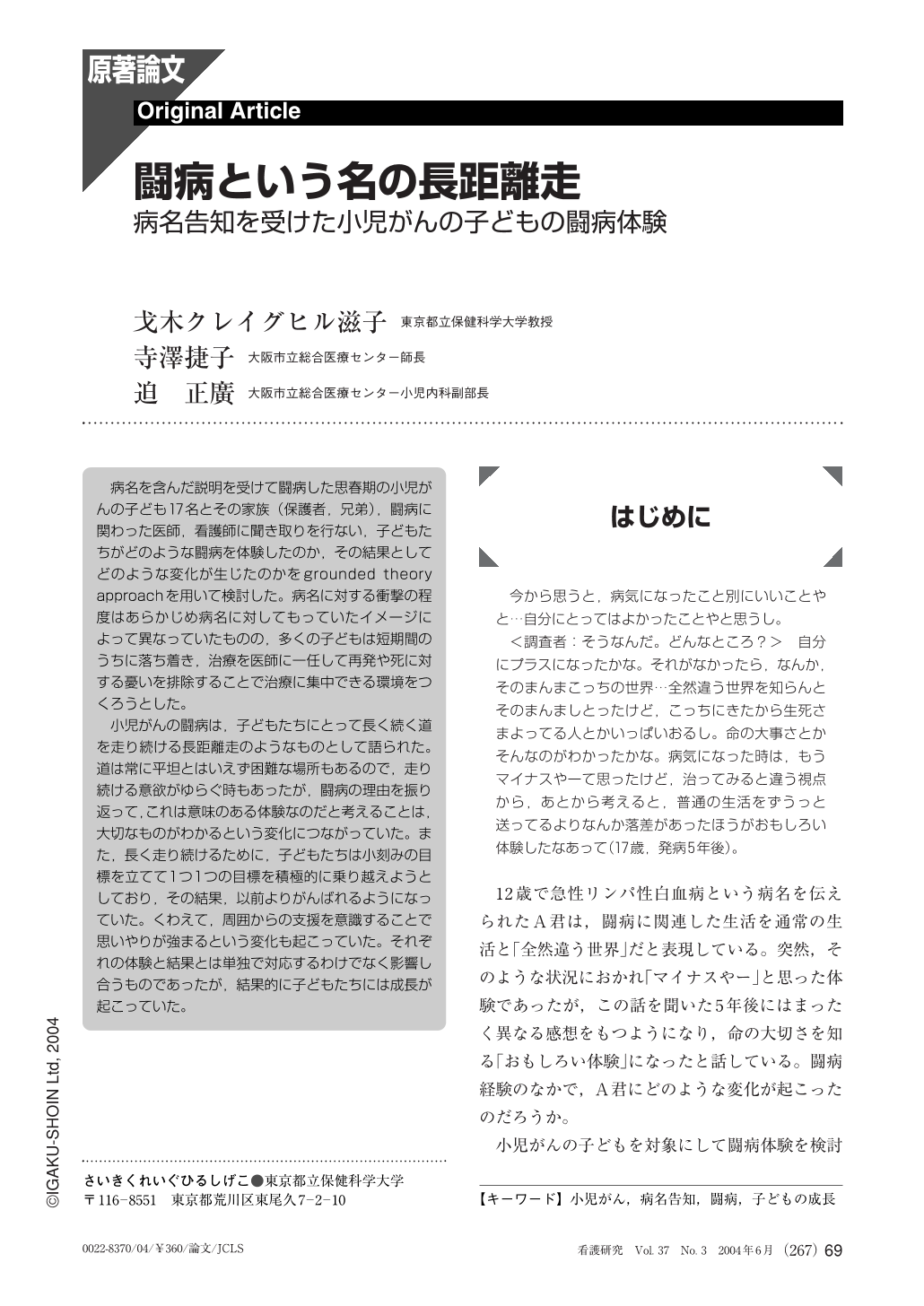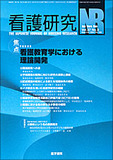Japanese
English
- 有料閲覧
- Abstract 文献概要
- 1ページ目 Look Inside
- サイト内被引用 Cited by
病名を含んだ説明を受けて闘病した思春期の小児がんの子ども17名とその家族(保護者,兄弟),闘病に関わった医師,看護師に聞き取りを行ない,子どもたちがどのような闘病を体験したのか,その結果としてどのような変化が生じたのかをgrounded theory approachを用いて検討した。病名に対する衝撃の程度はあらかじめ病名に対してもっていたイメージによって異なっていたものの,多くの子どもは短期間のうちに落ち着き,治療を医師に一任して再発や死に対する憂いを排除することで治療に集中できる環境をつくろうとした。
小児がんの闘病は,子どもたちにとって長く続く道を走り続ける長距離走のようなものとして語られた。道は常に平坦とはいえず困難な場所もあるので,走り続ける意欲がゆらぐ時もあったが,闘病の理由を振り返って,これは意味のある体験なのだと考えることは,大切なものがわかるという変化につながっていた。また,長く走り続けるために,子どもたちは小刻みの目標を立てて1つ1つの目標を積極的に乗り越えようとしており,その結果,以前よりがんばれるようになっていた。くわえて,周囲からの支援を意識することで思いやりが強まるという変化も起こっていた。それぞれの体験と結果とは単独で対応するわけでなく影響し合うものであったが,結果的に子どもたちには成長が起こっていた。
Seventeen adolescents who were aware of their cancer diagnoses, as well as their families, doctors, and nurses were interviewed regarding the experiences and changes the adolescents went through. The data was analyzed using a grounded theory approach. The degree to which the adolescents felt shocked by the diagnosis depended on how much of a negative image they had previously formed about the illness. However, for most of them, the emotional fluctuations they went through after being told of their diagnosis lessened within a short period. The adolescents would rely on their physicians to choose treatments and to remove their anxieties about the possibility of relapse and death, and would concentrate on fighting the illness.
The adolescents referred to their experience of the illness as a long marathon - in other words, an extended, grueling ordeal. Although their morale sometimes wavered during the difficult parts of the marathon, they tried to understand the meaning of their illness, and this helped them better understand what was really important. They also set up small goals to reach, because the ultimate goal seemed too distant. As a result of this focus on small goals, they became better able to persevere. They also became more aware of the help they were receiving and subsequently became more thoughtful of others. These various experiences and the reactions they stimulated did not just have a simple one to one relationship, but rather were all interrelated. Therefore, positive transformations were generated in these adolescents as they struggled with their illnesses.

Copyright © 2004, Igaku-Shoin Ltd. All rights reserved.


